Entry Database : PDB / ID : 2ly4Title HMGB1-facilitated p53 DNA binding occurs via HMG-box/p53 transactivation domain interaction and is regulated by the acidic tail Cellular tumor antigen p53 High mobility group protein B1 Keywords / / / / Function / homology Function Domain/homology Component
/ / / / / / / / / / / / / / / / / / / / / / / / / / / / / / / / / / / / / / / / / / / / / / / / / / / / / / / / / / / / / / / / / / / / / / / / / / / / / / / / / / / / / / / / / / / / / / / / / / / / / / / / / / / / / / / / / / / / / / / / / / / / / / / / / / / / / / / / / / / / / / Biological species Homo sapiens (human)Method / Authors Rowell, J.P. / Simpson, K.L. / Stott, K. / Watson, M. / Thomas, J.O. Journal : Structure / Year : 2012Title : HMGB1-Facilitated p53 DNA Binding Occurs via HMG-Box/p53 Transactivation Domain Interaction, Regulated by the Acidic Tail.Authors : Rowell, J.P. / Simpson, K.L. / Stott, K. / Watson, M. / Thomas, J.O. History Deposition Sep 12, 2012 Deposition site / Processing site Revision 1.0 Oct 31, 2012 Provider / Type Revision 1.1 Dec 26, 2012 Group Revision 1.2 May 1, 2024 Group / Database referencesCategory chem_comp_atom / chem_comp_bond ... chem_comp_atom / chem_comp_bond / database_2 / pdbx_nmr_software Item / _database_2.pdbx_database_accession / _pdbx_nmr_software.name
Show all Show less
 Yorodumi
Yorodumi Open data
Open data Basic information
Basic information Components
Components Keywords
Keywords Function and homology information
Function and homology information Homo sapiens (human)
Homo sapiens (human) Authors
Authors Citation
Citation Journal: Structure / Year: 2012
Journal: Structure / Year: 2012 Structure visualization
Structure visualization Molmil
Molmil Jmol/JSmol
Jmol/JSmol Downloads & links
Downloads & links Download
Download 2ly4.cif.gz
2ly4.cif.gz PDBx/mmCIF format
PDBx/mmCIF format pdb2ly4.ent.gz
pdb2ly4.ent.gz PDB format
PDB format 2ly4.json.gz
2ly4.json.gz PDBx/mmJSON format
PDBx/mmJSON format Other downloads
Other downloads 2ly4_validation.pdf.gz
2ly4_validation.pdf.gz wwPDB validaton report
wwPDB validaton report 2ly4_full_validation.pdf.gz
2ly4_full_validation.pdf.gz 2ly4_validation.xml.gz
2ly4_validation.xml.gz 2ly4_validation.cif.gz
2ly4_validation.cif.gz https://data.pdbj.org/pub/pdb/validation_reports/ly/2ly4
https://data.pdbj.org/pub/pdb/validation_reports/ly/2ly4 ftp://data.pdbj.org/pub/pdb/validation_reports/ly/2ly4
ftp://data.pdbj.org/pub/pdb/validation_reports/ly/2ly4 Links
Links Assembly
Assembly
 Components
Components Homo sapiens (human) / Gene: HMG1, HMGB1 / Plasmid: pT7-7 HMG1-A / Production host:
Homo sapiens (human) / Gene: HMG1, HMGB1 / Plasmid: pT7-7 HMG1-A / Production host: 
 Homo sapiens (human) / Gene: P53, TP53 / Plasmid: pET16b-p53(1-93) / Production host:
Homo sapiens (human) / Gene: P53, TP53 / Plasmid: pET16b-p53(1-93) / Production host: 
 Sample preparation
Sample preparation Processing
Processing Movie
Movie Controller
Controller


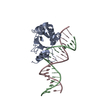

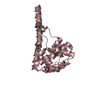

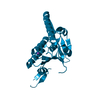
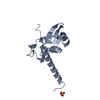

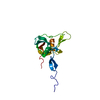
 PDBj
PDBj


























 HSQC
HSQC